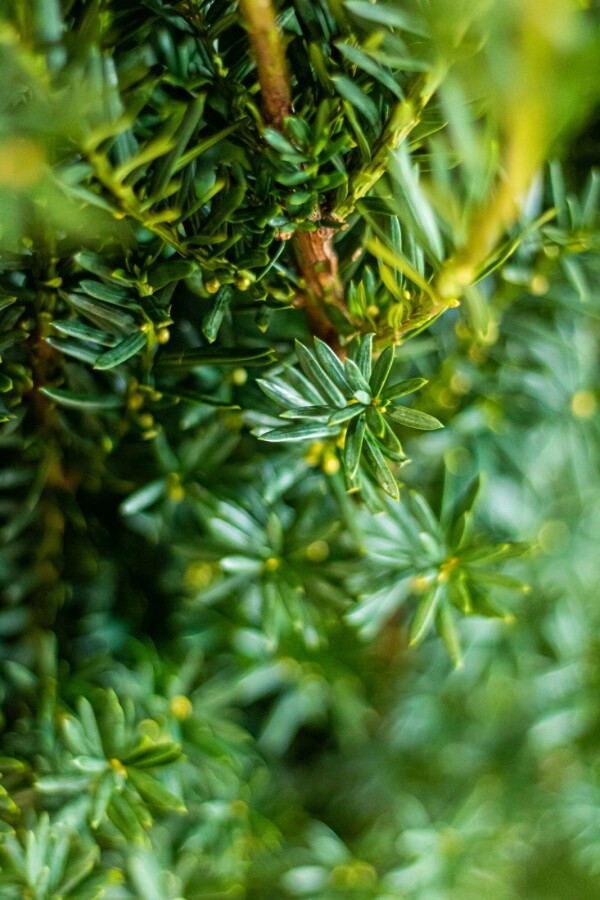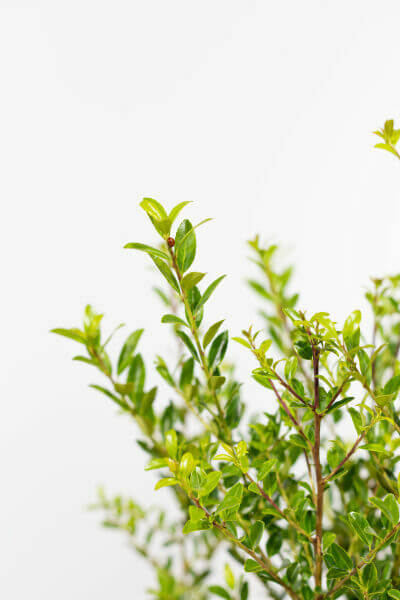Best Hedging Plants For School Grounds
Best Hedging Plants For School Grounds
Blog Article
Hedge Plants For Pathways
Improve your garden's attraction with lavish hedge varieties such as Yew (Taxus), Thuja, Laurel, Photinia, and Bamboo, celebrated for their structural stability and environmental advantages.
Yew and Thuja provide evergreen protection and winter strength, while Laurel provides quick growth and broad, aromatic leaves.
Photinia adds seasonal beauty with its vibrant red foliage, and Bamboo provides a low-maintenance, serene ambiance.
These hedges enhance air quality, lower noise, and develop tranquil, private spaces.
Correct planting, spacing, and maintenance guarantee energetic growth and ecological consistency.
Check out how these lush varieties can raise your garden's beauty and well-being.
Key Takeaways
Change Your Garden With Lush Hedge Varieties
- Select Yew for its thick, evergreen growth and exceptional durability.
- Opt for Laurel for its fast growth and broad leaves, guaranteeing fast personal privacy.
- Pick Photinia for its vibrant seasonal foliage, which turns a striking dark red.
- Use Bamboo for a low-maintenance, winter-hardy hedge with visual appeal.
- Area plants 2-3 per meter and prune regularly for ideal growth and health.
Popular Hedge Plants
When changing a garden with rich hedge ranges, it's important to consider popular hedge plants such as Yew, Thuja, Laurel, and Photinia due to their unique characteristics and benefits.
Yew (Taxus) is extremely esteemed for its durability and thick, green development, making it a prime option for sustaining landscapes.
Thuja is kept in mind for its evergreen foliage and robust winter season durability.
Photinia adds seasonal vibrancy with red leaves that darken gradually, producing vibrant visual appeal.
Laurel uses quick development and aromatic, broad leaves, suitable for fast personal privacy.
Furthermore, Bamboo is an exceptional option for atmosphere, providing a low-maintenance, winter-hardy option that enhances the garden's visual with its classy, swaying walking sticks.
These selections cater to a range of horticultural requirements and preferences.
Benefits of Garden Hedges
Garden hedges use a multitude of benefits, making them an important addition to any landscape. These natural barriers are economical to execute and supply considerable wind protection, boosting air flow and contributing to noise decrease. The dense foliage of hedges like Thuja and Beech ensures personal privacy by obstructing presence, producing a remote and peaceful environment.
Hedges likewise play an important role in microclimate policy, supplying a stable environment that cultivates plant growth and lessens temperature changes. Their detailed leaf structures filter contaminants, enhancing air quality and adding to a much healthier garden ecosystem.
Furthermore, hedges master noise reduction, soaking up and deflecting acoustic waves to lower ambient noise levels. This dual performance of supplying both visual and acoustic personal privacy boosts the overall tranquility and aesthetic appeal of any garden.
Planting and Upkeep Tips
For an effective hedge, careful preparation of the planting location is crucial. Guarantee the soil has appropriate pH and drain to support strong root advancement.
Area the plants properly for the picked species. Water the hedge regularly during its initial growth phase, adjusting as required with seasonal modifications.
Implement a systematic pest control and illness avoidance method, utilizing natural or chemical treatments when essential. Frequently check for aphids, termites, and fungal infections.
Apply mulch to keep moisture and reduce weeds. Seasonal pruning promotes thick development and air flow, vital for plant health.
Following these guidelines will help you cultivate a vibrant, well-maintained hedge that boosts the charm of your garden.
Spacing and Cutting Guidelines
Spacing and Cutting Standards
Proper spacing and trimming are vital for cultivating healthy, aesthetically appealing hedges. Appropriate spacing guarantees each plant receives sufficient nutrients, light, and air flow.
Follow these guidelines for optimal hedge upkeep:
- Spacing: Position hedge plants 2-3 plants per meter to motivate robust growth.
- Pruning Strategies: Routine pruning is important for maintaining wanted hedge height and shape. Trim brand-new development in summer and cut down older wood during winter season.
- Seasonal Care: Adjust cutting schedules and techniques according to seasonal requirements to make sure plant health.
- Hedge Height: Routinely display and trim to keep the desired hedge height and attain uniform aesthetics.
Adhering to these actions will ensure your hedge prospers, boosting both the appeal and functionality of your garden.
Picking the Right Hedge
Choosing the Right Hedge
Choosing the proper hedge involves assessing aspects such as mature height, foliage density, and ecological durability. Effective hedge plant selection requires comprehending each types' growth qualities and site-specific flexibility.
For instance, Yew (Taxus) offers excellent longevity and thick development, while Thuja is significant for its winter resilience. Furthermore, thinking about maintenance requirements is essential; fast-growing types like Laurel or Privet need routine cutting, whereas low-maintenance options like Bamboo or Ivy might be more effective for those looking for minimal upkeep.
Environmental factors such as soil type, light accessibility, and moisture conditions must likewise direct the selection process. This cautious method ensures the chosen hedges will flourish, providing both aesthetic and functional advantages to the garden landscape.
Shipment and Planting Recommendations
To guarantee your hedge plants prosper, they must be delivered by specialized couriers and planted promptly upon arrival.
Follow these necessary actions for effective planting:
- Soil Preparation: Enhance the soil with raw material to enhance drain and nutrient content.
- Planting Depth: Create a trench two times the width and equivalent to the depth of the root ball.
- Watering Methods: Water thoroughly after planting, keeping the soil consistently wet however not saturated.
- Mulching: Use a layer of mulch to keep moisture and suppress weeds.
Consumer Assistance and Service
Given the vital function of timely help in horticultural pursuits, our client support team is readily available 6 days a week through telephone, email, and social networks to provide skilled recommendations and swiftly resolve any concerns. Their devotion to fast response times makes sure customer fulfillment by fixing queries associated with plant health, optimum planting techniques, and upkeep schedules.

Reaction Time
Within 24 hours
Social network
This thorough support system, reinforced by an excellent 9.3/ 10 client rating, highlights our dedication to improving the gardening experience for every customer.
Often Asked Concerns
For How Long Does It Take for Hedge Plants to Develop?
Hedge plants typically need one to three years to end up being totally established, with the specific duration differing by species and growing conditions.
Efficient care during this vital period is vital for robust development. Consistent watering, alert weed control, and appropriate fertilizer application are critical in promoting strong root advancement.
For example, fast-growing types like Laurel might establish quicker, while slower-growing varieties such as Yew might take longer. Thorough upkeep accelerates the establishment procedure, resulting in healthy and thick hedges.
What Are the very best Hedge Plants for Privacy?
The question of the very best hedge plants for personal privacy includes evaluating evergreen and deciduous choices.
Evergreen hedges like Thuja, Laurel, and Cypress supply year-round protection, ensuring continuous personal privacy.
On the other hand, deciduous hedges such as Beech use seasonal privacy, shedding leaves in colder months.
Key maintenance ideas for personal privacy hedges consist of regular cutting, fertilizing in spring, and correct spacing-- normally 2 to 3 plants per meter.
In addition, consistent watering and diligent weed removal are crucial for promoting healthy, thick development.
Can Hedge Plants Draw In Wildlife to My Garden?
Yes, hedge plants can bring in wildlife to your garden by supplying essential benefits like shelter, food, and nesting websites, therefore enhancing regional biodiversity. Yew, holly, and laurel are excellent for attracting birds, while ivy supports a variety of pests.
Nevertheless, it is essential to keep in mind that there are some disadvantages, such as increased maintenance to manage bugs and routine maintenance. Thoroughly picking and preserving hedge varieties can help stabilize these advantages and disadvantages, eventually fostering a vibrant and sustainable community in your garden.
Are There Any Flowering Hedge Plants Available?
Yes, there are flowering hedge plants available that can enhance the charm of your garden.
For example, Elaeagnus, also understood as Olive Willow, produces fragrant white flowers in the fall, including a touch of beauty.
Photinia, another popular option, showcases dynamic red leaves that grow into a rich green, developing a dynamic visual result throughout the seasons.
To guarantee these plants thrive, it's vital to practice proper pruning strategies and seasonal maintenance, such as cutting brand-new growth in the summer season and cutting back in the winter season.
These measures will assist keep the health and aesthetic appeal of your blooming hedges.
How Do I Prevent Insects in My Hedge Plants?
To avoid pests in hedge plants, employ natural bug control methods and preserve correct hedge care. Introduce helpful insects like ladybugs, which take advantage of damaging pests, to produce a well balanced environment.
Regularly examine your hedges for indications of problem and without delay remove any affected parts to prevent the spread. Make sure the health of your hedges by applying well balanced fertilizers and providing adequate water.
Use mulching to keep soil wetness and correct spacing to lower plant tension and promote robust development. These practices collectively help in minimizing insect problems and keeping a healthy hedge.
Conclusion
In essence, picking the ideal hedge ranges such as Yew, Thuja, and Laurel can change any garden into a website serene sanctuary. These plants supply year-round plant, improve aesthetic appeal, and offer practical benefits like sound reduction and wind security.
Correct planting strategies, precise spacing, consistent watering, and seasonal trimming are important for optimal growth.
Dependable delivery services and skilled consumer support ensure a seamless experience from purchase to planting, making it easier than ever to elevate your outdoor area.
Garden hedges provide a wide variety of benefits, making them a valuable addition to any landscape. These natural barriers are cost-efficient to execute and offer significant wind defense, improving air circulation and contributing to sound reduction. The thick foliage of hedges like Thuja and Beech guarantees privacy by blocking visibility, producing a peaceful and remote environment.

Pruning Techniques: Regular pruning is important for preserving desired hedge height and shape. Trim new development in summer season and cut back older wood throughout winter.
Report this page